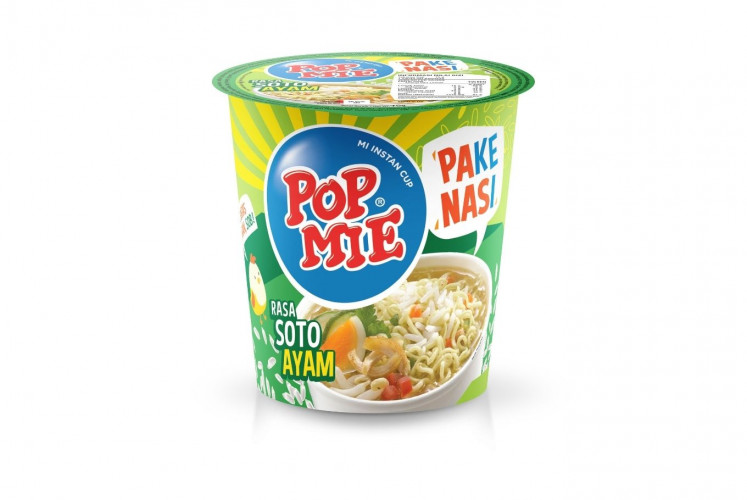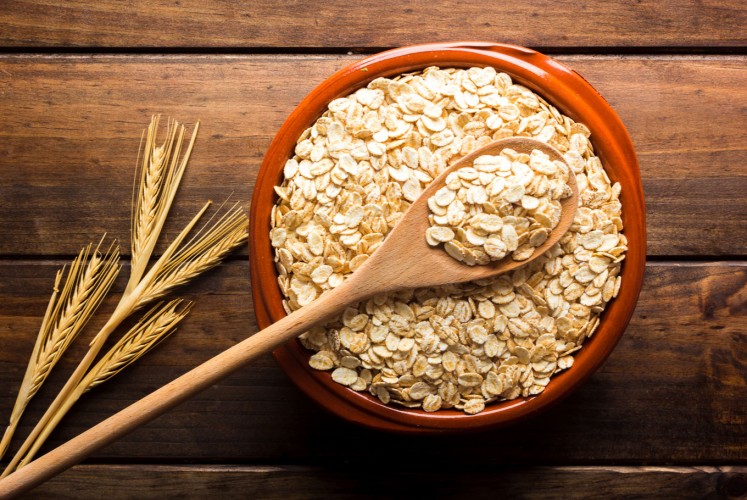Popular Reads
Top Results
Can't find what you're looking for?
View all search resultsPopular Reads
Top Results
Can't find what you're looking for?
View all search resultsAs Indonesian as it gets: Pop Mie cup noodles with rice
Pop Mie is the first brand in Indonesia to launch a noodles-rice combination in one cup, but is the carbs combo good for your body?
Change text size
Gift Premium Articles
to Anyone
R
ice is an inseparable part of most Indonesians’ daily meals. It is also fairly common for them to enjoy rice and noodles in one dish, resulting in a carbs combo.
Processed food giant PT Indofood CBP Sukses Makmur has launched Indonesia’s first Pop Mie PaNas pakai nasi (made with rice), a new variant of the company’s cup noodle brand Pop Mie. Echoing its name, Pop Mie PaNas offers rice and noodles in the same cup. People only need to pour hot water into the cup and wait for three minutes to enjoy a combination of rice and noodles soaked in warm, savory chicken broth. It also comes with dried vegetables that will add more texture to the dish.
Pop Mie PaNas is a new variant of the company’s cup noodle brand Pop Mie. People only need to pour hot water into the cup and wait for three minutes to enjoy a combination of rice and noodles soaked in warm, savory chicken broth. (Pop Mie /File)Julia Atman, PT Indofood CBP Sukses Makmur’s general marketing manager of the noodle division, said that Pop Mie would keep rolling out innovations to fulfill Indonesians’ needs. Julia added that one of Pop Mie’s key values was product development designed to be responsive to Indonesians’ culture and habits.
“We’ll keep going forward with new innovations by considering Indonesians’ dynamic needs,” said Julia in a statement.
Vemri Veradi Junaidi, PT Indofood CBP Sukses makmur’s senior brand manager of Pop Mie, said that the company intended to answer people’s suggestions about combining rice and noodles at once and it also used real rice in the product.
During the Pop Mie PaNas launch on Monday, Vemri said that their product had met food safety standards and passed the Food and Drug Monitoring Agency’s (BPOM) tests. “Our innovation follows the [advised] measures. The noodles are 70 percent [of the dish] and the rice is 30 percent,” Vemri told kompas.com.
At the same event, chairman of the Indonesian Nutritionists and Food Expertise Association (Pergizi Pangan) Hardinsyah recommended people consume Pop Mie PaNas in moderation and balance their diet with exercise. He added that the nutritional content in the product fulfilled a small amount of a person’s nutritional needs.
“The total calories in Pop Mie [PaNas] are 350 kilocalories or one sixth of our calorie intake,” said Hardinsyah. “The protein is 7 grams or one tenth of our total daily protein intake.”
Pop Mie PaNas is available at Rp 5,000 (34 US cents) per cup or Rp 60,000 per box on e-commerce platforms, supermarket and convenience stores.
Understanding carbohydrates
Clinical dietitian and sports nutritionist Emilia Achmadi told The Jakarta Post on Wednesday that, on average, 50 percent of a person’s energy intake came from carbohydrates. However, the problem lies in what types of carbohydrates people choose to eat.
According to Emilia, there are two types of carbohydrates: good ones and not-so-good ones. This is based on several aspects, including fiber content.
Good, complex carbohydrates are a type of carb high in fiber with relatively high vitamins and minerals. With such carbohydrates, the fiber helps in controlling blood sugar levels. Foods that are part of this group are brown rice, wheat bread, couscous, barley, oatmeal and sweet potatoes.
Oatmeal bowl. (Shutterstock/File)“However, people often focus on the not-so-good, complex carbohydrates, such as white rice, white bread, noodles and rice noodles. These are complex carbohydrates, but because they don’t contain fiber or the fiber has been wasted after being processed in such a way, they raise blood sugar levels faster,” Emilia said.
She recommended that people count their calorie intake based on various factors, including one's gender, height, weight and age. It would help them to determine how many and how often they have to consume carbohydrates. Balance is key.
“Basically, if we consume not-so-good carbohydrates in a small portion, it won’t have an overly negative impact. […] If we don’t eat them too often, I don’t see the problem. The only issue is that people tend to eat rice and noodles that exceed their bodies' needs,” she said, adding that frequently consuming not-so-good carbohydrates in large portions leads to high blood sugar and cholesterol levels.
Additionally, she advised people to think about the long-term impacts of the foods they eat instead of following their emotions. It is also necessary to consume more fruit and vegetables as they are part of the good, complex carbohydrates and good, simple carbohydrates, respectively.
“For example, if my daily calorie intake is 1,600, then 800 of this comes from carbohydrates, but it doesn’t mean I only eat rice and noodles. I divide them into rice, fruit, vegetables and oatmeal,” Emilia said. (wng)
Your Opinion Matters
Share your experiences, suggestions, and any issues you've encountered on The Jakarta Post. We're here to listen.
Thank you
Thank you for sharing your thoughts. We appreciate your feedback.













